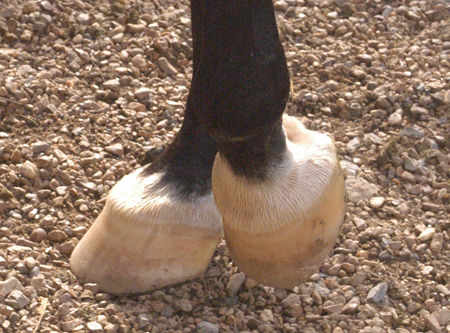Flax seeds: old-fashioned, but oh so effective
- Equine Naturelle

- Oct 28
- 2 min read

Flaxseed is one of those classic ingredients that has been fed to animals for generations. And rightly so: it is packed with valuable nutrients, easy to prepare and has a gentle, soothing effect on digestion. In this blog, we delve into the benefits and uses of flaxseed, whether hot or cold, cooked or raw.
Why flaxseed?
Flaxseed is rich in: Good fatty acids, including omega 3 Proteins, for muscle building and repair Mucilage, which has a soothing effect Minerals and antioxidants, such as magnesium, selenium and vitamin E
Does your horse have a black tongue? Time for some linseed porridge!
A black or grey coating on your animal's tongue may indicate that it has been eating sand, something that occurs mainly in spring and autumn in animals that graze outdoors. Sand can accumulate in the intestinal tract and cause blockages. So if your horse has a black/grey tongue, it is best to make a linseed mash!
How to make flaxseed porridge yourself:
Take 200 to 500 grams of flaxseed (depending on the size of the animal)
Add double the amount of boiling water
Let the mixture simmer gently for a few minutes while stirring
Allow to cool thoroughly and feed on the same day
Cooking releases mucilage, which forms a protective layer, helps remove sand and has a soothing effect on digestion.
Important: Always make a fresh batch and feed it all. Linseed oxidises quickly, causing valuable nutrients to be lost.
Uncooked linseed?
That's fine too!
Contrary to popular belief, whole linseed can also be fed uncooked. In fact, during the moulting or recovery period, adding a little linseed to the feed every day can give a nice boost. How much? For an average horse, 50 to 100 grams per day is no problem at all. The linase content (which could release hydrocyanic acid) is not harmful under normal use.
Alternate for the best effect
Although linseed has many benefits, it is wise to feed it periodically.
For example: 2 weeks yes, 2 weeks no, and so on.
This allows your animal to benefit from the advantages without becoming saturated or overloaded with protein. For animals with higher protein requirements, such as pregnant mares or sport horses in season, the dose may be slightly higher, provided it is adjusted to the total ration.
In conclusion
Whether you opt for a warm slobber on cold days or a handful of linseed as a daily boost, this old-fashioned seed proves its worth time and time again. Simple, effective, nutritious and loved by almost every animal.




Comments